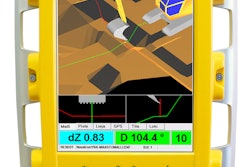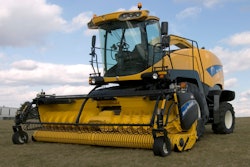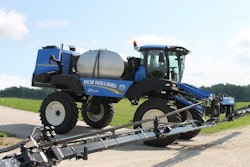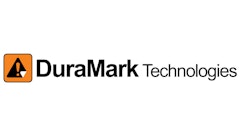In September 2010, a Triadelphia, WV, testing lab was rocked by a severe explosion that was felt as far as half a mile away from the blast. The explosion bent doors, shattered glass panels and threw large glass shards twenty feet. Explosions like this—thought to have been caused by ignition of methane gas—have historically made national headlines. For example, an explosion triggered by methane in West Virginia’s Sago Mine in 2006 resulted in the loss of 12 miners’ lives. Just four years later, a similar event at the nearby Upper Big Branch mine resulted in the loss of 29 miners’ lives. Unlike those tragic events, however, the testing lab event may result in saving miners’ lives.
The Triadelphia explosion occurred in the Mine Safety and Health Administration’s (MSHA) Approval and Certification Center (A&CC) during testing of an explosion-proof enclosure. The center tests equipment, instruments and materials for compliance with federal regulations. One of the primary focuses of the testing is to determine that there is no likely explosion hazard if the product is used in a methane-air atmosphere or in coal dust. Products that pass rigorous testing criteria may be eligible to attach an approval plate bearing the coveted “MSHA-approved” marking. The marking is required for certain mining products used in underground coal and gassy underground metal mines.
While the A&CC’s certification and approval process may be protracted and complex, manufacturers who dare affix the approval plate without the consent of A&CC may face huge criminal penalties. Section §110(h) of the Mine Act provides for the imposition of up to a $10,000 fine, imprisonment for up to five years, or both, for persons who represent that equipment complies with federal regulations when it does not.
Differentiating Acceptance, Certification or Approval?
Acceptance
Acceptance is written notification by MSHA that a product has met the applicable requirements and will be listed by MSHA as acceptable. For example, if a hose meets the applicable requirements for the regulation regarding electric motor-driven mine equipment and accessories, it will be listed by MSHA as acceptable flame-resistant auxiliary equipment. An accepted product is not a certified or approved product.
Certification
A letter of certification may be issued by MSHA for a component that is intended for incorporation in a complete machine or accessory for which approval may be subsequently issued. Until the certified component is in a completely assembled machine or accessory, it is not considered an approved product.
Approval
A certificate of approval is a formal document issued by MSHA that states that a completely assembled product has met the applicable requirements. It authorizes the use and attachment of an approval plate to an approved product. The A&CC maintains a list of approved products, each with a unique identification number that indicates which regulation applies, whether the approval was of an MSHA standard or a non-MSHA standard (such as the International Electrotechnical Commission), the calendar year of the approval issuance, and a four-digit sequential approval number.
Application process
The application process is elaborate, but there are alternative application procedures that may enhance the approval process, reduce paperwork and improve processing time. In most instances, the applicant submits thirty to forty individual drawings, but in an alternate application procedure for approval of diesel-powered equipment, there is an application that requires only six assembly-type drawings.
There are several steps that a manufacturer should take to ensure the most efficient and effective means to obtain approval of a product.
- Request a free consultation meeting with MSHA before submitting an application. The A&CC can provide a cursory review of your design at no charge in order to identify potential problem areas, reduce discrepancies in the application package and reduce the time to obtain an approval.
- Submit a complete design. This approval process is not designed to evaluate alternative design approaches. It is established in order to determine whether a completed design meets MSHA requirements. By submitting an application package that includes a complete design and a complete drawing list without duplicate or unnecessary information, the A&CC will be able to provide a more accurate fee estimate, begin the investigation without delay and prevent backlog for other applications.
- Budget conservatively. MSHA will provide an initial fee estimate based on its actual hourly rate for the investigation and processing of the application, but extensive discrepancies or redesigns that require additional investigation time may result in an increase to the fee. The applicant should budget conservatively, particularly if there is any uncertainty in the design.
- Do not omit required notes on drawings and other submissions. The regulations require very specific warning notes and identifying information on each drawing and each page of a parts list or bill of material. Pay special attention to these requirements and make sure the information is included on every page.
- Translate all notations into English. All foreign language nomenclature must be translated into English.
- Include details regarding attachment of the MSHA approval or certification label. Include the location, size, material and method of attachment of the MSHA approval or certification label in the drawings, and, for a certification application, include the information that will be noted on the certification label. For an approval application, information contained on the label is not required in the application; that information will be provided when the investigation is completed.
- Submit test reports from other approval agencies. Submit test reports from independent laboratories, such as Underwriters Laboratories, Inc., that are currently recognized by a laboratory-accrediting organization. Be aware that acceptance or recognition by such testing agencies does not necessarily mean that the product will be acceptable by MSHA. The applicant should review the test reports prior to submission to ensure that the reports indicate characteristics of the component, such as flashing or exploding, that may not be acceptable by MSHA.
- Pay careful attention to follow-up deadlines. MSHA may send a discrepancy letter, which in most instances, requires that a complete response correcting the discrepancies be returned within three months. If you are interested in obtaining acceptance, certification or approval of your product by MSHA, consult with an attorney who is knowledgeable in the technical and administrative requirements. A proper submission may accelerate the time to obtain an approval, reduce the investigation fee and avoid common pitfalls that could result in cancellation or rejection of the application.
The A&CC application process may be challenging, but a manufacturer that obtains the MSHA-approved label for its products may substantially expand its mining industry customer base. Rigorous testing may also help prevent events like those of Upper Big Branch and Sago, which resulted in the tragic loss of many miners’ lives.


















![Hcm Ax Landcros Press Release[32] jpg](https://img.oemoffhighway.com/mindful/acbm/workspaces/default/uploads/2025/11/hcmaxlandcros-press-release32jpg.mAEgsolr89.jpg?ar=16%3A9&auto=format%2Ccompress&fit=crop&h=135&q=70&w=240)